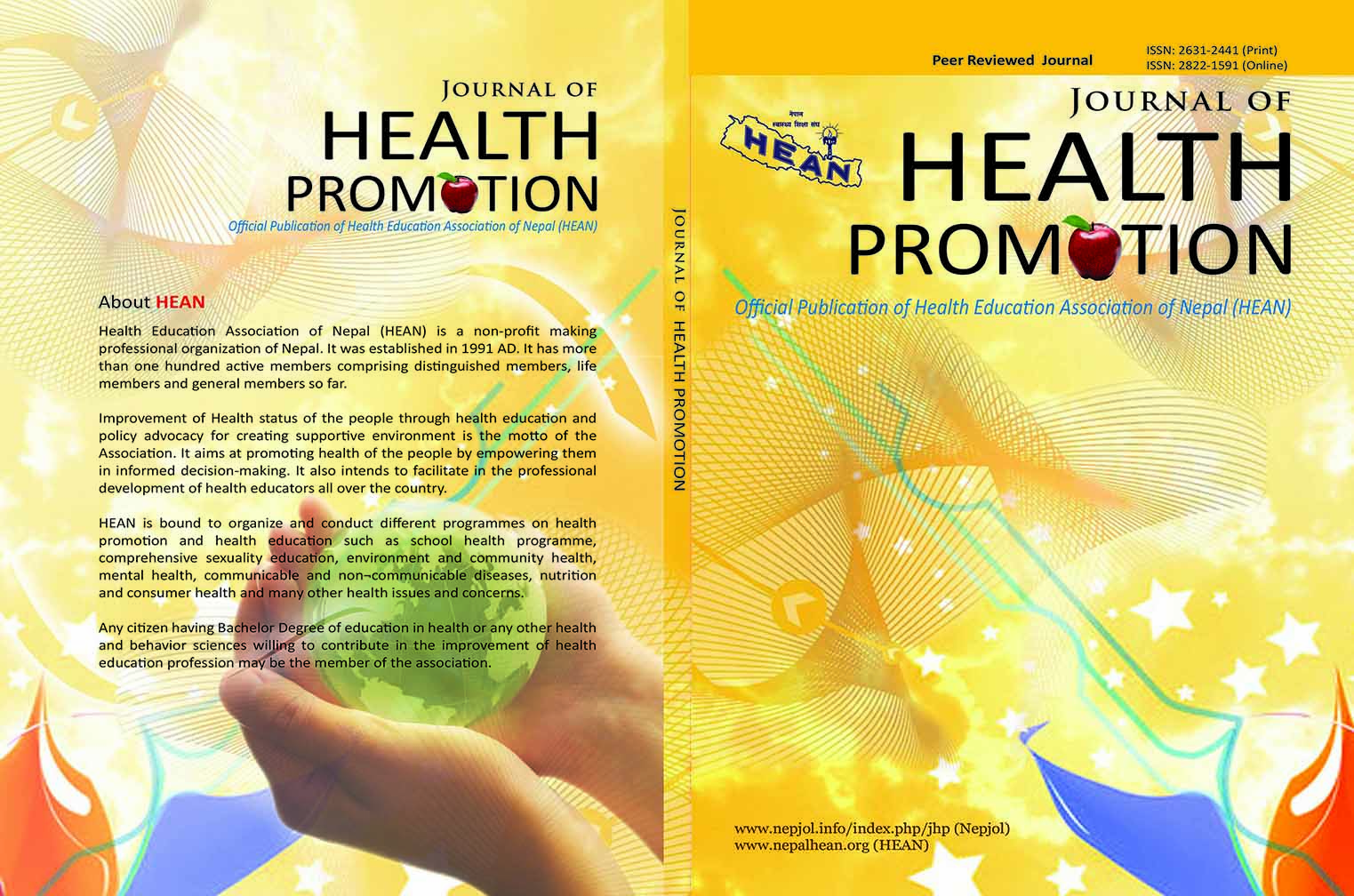Child Marriage and Physical Violence: Results from a Nationally Representative Study in Nepal
DOI:
https://doi.org/10.3126/jhp.v6i0.21804Keywords:
child marriage, physical violence, husband, women's autonomyAbstract
Child marriage is a significant public health concern especially in developing countries. This study examines the prevalence and factors influencing the physical violence among married women in Nepal. More specifically, this paper aims to investigate whether child marriage has an effect on married women’s experience of physical violence by their husbands. Data were drawn from the Nepal Demographic and Health Survey, 2016, involving currently married women aged 15–49 years who had participated in the domestic violence module (n=3447). Weighted percentages were calculated to examine the age at marriage for experiencing physical violence from their husband. A multivariate logistic regression model was used to assess risk factors of physical violence due to child and early marriage. After controlling individual, household and community characteristics, this study found that lower age at marriage had increased odds of women experiencing physical violence by their husband. It is found that women who got married at less than 15 years, 15-17 years, 18-19 years were 2.3 times (adjusted OR=2.33), 1.68 times (adjusted OR=1.68) and 1.64 times (adjusted OR=1.64) respectively more likely to experience violence by their husbands than those who got married at the age of 20 years or later. Child and early marriage puts women at increased risk of physical and sexual violence. Government agencies need to strictly enforce existing law on the minimum age at marriage to reduce violence from their husband and increase quality of life of women and family.
Journal of Health Promotion Vol.6 2008, p.49-59
Downloads
Downloads
Published
How to Cite
Issue
Section
License
© Health Education Association of Nepal (HEAN)
Authors are required to transfer their copyright to the Health Education Association of Nepal (HEAN).
The materials of this publication may be reproduced, reviewed and translated, acknowledging the source "Journal of Health Promotion".




